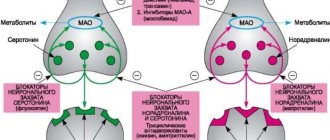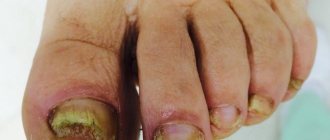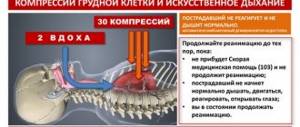Hysteroscopy - what is it?
Hysteroscopy of the uterus is an examination of the inner surface of the uterus using a special optical device inserted into the woman’s body intravaginally. The image obtained by the device is transmitted to the monitor.
The procedure allows you to diagnose various diseases of the woman’s reproductive organs. In addition, it makes it possible to collect tissue for research and eliminate small defects in the uterine cavity: polyps, adhesions, fibroids, etc.
A special device displays the image on the screen
Depending on the purpose of implementation, hysteroscopy is divided into several types:
- Diagnostic (office): panoramic, microgesteroscopy and panoramic microgesteroscopy.
- Therapeutic (surgical): gas and liquid.
All types of procedures are performed under anesthesia, and in most cases do not require hospitalization. Complete recovery of the body after the intervention takes 2-3 days.
Hysteroscopy is performed in gynecological offices in public and private medical institutions. The average cost of the procedure is 6800-7300 rubles.
Advantages of the method
The main advantages of hysteroscopy include:
- extreme accuracy;
- the ability to do a biopsy;
- minimal likelihood of complications;
- possibility of carrying out medical procedures.
During the examination, the doctor sees on the monitor the mucous membrane of the cervical canal, the uterine cavity, and the place where the fallopian tubes enter the uterine cavity. The image is repeatedly enlarged and displayed on the screen, making it possible to notice even the smallest changes. Diagnostic biopsy alone is relatively rarely prescribed. As a rule, the procedure is combined with a biopsy - the removal of a small piece of tissue.
The resulting material is sent to the pathology laboratory. Mini-forceps are used to perform a biopsy, and thanks to the high resolution of hysteroscopy, the doctor can take mucous membranes from suspicious areas. In this regard, hysteroscopy is an excellent alternative to traditional curettage. A hysteroscope is a thin tube that requires minimal dilatation of the cervical canal for insertion. In addition, hysteroscopy is performed under video control, which cannot be said about “blind” curettage. If the doctor has sufficient experience, then the likelihood of complications after hysteroscopy is minimized.
Diagnostic hysteroscopy is often combined with therapeutic procedures. Using special attachments, the doctor can remove a polyp or fibroid, eliminate intrauterine adhesions, and perform other manipulations without resorting to serious abdominal surgery.
Indications for surgery
A diagnostic type of hysteroscopy is necessary for the following indications:
- diseases and pathologies of the internal genital organs;
- uncharacteristic vaginal bleeding;
- search for membranes after an abortion or miscarriage;
- infertility and problems with bearing a fetus;
- examination after taking hormonal drugs.
The therapeutic hysteroscopic procedure, or hysteroresectoscopy, is performed:
- during excision of endometrial polyps;
- for removal of submucous fibroids;
- to get rid of intrauterine septum;
- with endometrial hyperplasia;
- for removal of intrauterine contraceptives.
Hysteroscopy is performed in case of endometrial polyps
How does office hysteroscopy work?
Before the procedure, the doctor lubricates the patient’s genitals and thighs with an antiseptic solution. The cervix is fixed and treated with ethanol. Then a probe is inserted into the cervix, and its length is measured.
After dilation of the cervical canal, it is washed, and secretions are drained from it. Then the hysteroscope is inserted into the uterus, from where the mucous membrane and the shape of its cavity and relief are examined.
The normal uterine cavity looks like an oval, with the thickness and vascular pattern of the endometrium according to the cycle:
- before ovulation, the endometrium is abundantly supplied with vessels;
- after ovulation, the endometrium becomes folded and thickened;
- before menstruation, the endometrium becomes thickened, velvety, with areas of hemorrhage.
Preparation for hysteroscopy
Carrying out a hysteroscopic examination requires special preparation.
This procedure will require the following laboratory tests:
- biochemical tests of urine and blood;
- vaginal smear;
- blood test for STDs;
- jersey neck cytology;
- Ultrasound of the genital organs;
- ECG and fluorography.
Before hysteroscopy, an ultrasound of the pelvic organs is performed
Studies are carried out 2 weeks before the date of surgery. The procedure also requires an examination and conclusion from a therapist.
Other preparatory measures before hysteroscopy include:
- For a week: refusal to visit the sauna and take hot baths, stop douching and taking vaginal medications.
- For 3 days: restrictions on the use of tampons and vaginal sprays, refusal of vaginal sexual intercourse.
- The day before: reducing fluid intake, washing the vagina with an enema, refusing to eat and drink after midnight.
Immediately before the procedure, you should empty your bladder. You also need to take pads with you: after hysteroscopy bleeding occurs.
How is the operation performed?
Both types of hysteroscopy are performed on days 5-7 of the menstrual cycle. During this period, the endometrium is very thin, so it will not bleed during the procedure.
Office hysteroscopy does not require hospitalization.
For a therapeutic procedure, it may be needed in the following cases:
- the patient has entered menopause;
- the woman has not given birth yet;
- a biopsy is required;
- The patient suffers from heart disease.
The type of anesthesia used during hysteroscopy depends on the type of procedure. For the therapeutic type of operation, general anesthesia is used, while for diagnostic intervention, treating the cervix with a local anesthetic is sufficient.
Hysteroscopic examination is carried out as follows:
- 1 hour before the examination, the patient’s temperature and blood pressure are measured. If necessary, sedatives are given.
- If general anesthesia is administered, the patient's arms and legs are secured with straps, after which the anesthetic is administered intravenously. If local anesthesia is used, it is applied directly to the cervix.
- A speculum is inserted into the vagina, through which the hysteroscope is inserted. The device has two inputs: one transmits an image, the second expands the uterus using liquid or gas.
- If necessary, a hysteroresectoscope is inserted: this is a device used in therapeutic hysteroscopy to remove various defects in the uterine cavity.
The duration of hysteroscopy depends on the type of procedure. The diagnostic procedure lasts 15-30 minutes, and surgical intervention can last up to 2-2.5 hours.
Features of the diagnostic procedure
There are also contraindications to hysteroscopy, which we will discuss later. In most cases, this kind of diagnosis is necessary for menstrual irregularities. The procedure can be auxiliary, that is, used as an additional examination. If a doctor performs curettage of the uterine mucosa without using hysteroscopy, there may be a discrepancy in diagnoses. Note that the procedure is extremely necessary in the presence of pathological discharge (it can be purulent or bloody). Abnormal discharge is often present during postmenopause and may indicate polyps in the endometrium. If any, examinations should be carried out to confirm or rule out endometrial cancer.
It is very important to identify the exact location of the polyps: this is the only way to choose the right treatment method. As we have already said, the indication for hysteroscopy is a suspicion of uterine fibroids. The procedure allows you to identify the size and location of the nodes, and also selects the optimal treatment method. The specialist needs to understand whether hormonal therapy should be carried out before surgery. The indication for the procedure is adenomyosis: to diagnose this disease, you need some experience. Doctors comprehensively analyze the picture of adenomyosis.
More information about indications and additional diagnostic measures
If necessary, hysteroscopy is supplemented with metrography and ultrasound. These measures make it possible to identify adenomyosis and the degree of its severity. As a result of a comprehensive examination, a clear picture of the disease will be visible. Hysteroscopy is prescribed for suspected infertility, which may be caused by pathological changes in the uterus. Women who are diagnosed with infertility may have abnormalities associated with the uterus and other genital organs. It happens that foreign bodies are detected in the uterine cavity: a diagnostic procedure allows you to determine the condition of the fallopian tubes. Postpartum complications are an indication for this procedure: the doctor needs to assess the condition of the uterus. If a cesarean section was performed, the doctor assesses the condition of the scar.
If endometritis is present, the uterine cavity is washed with an antiseptic solution, then the source of inflammation is removed. If the doctor suspects that an egg remains in the patient’s body after an abortion, a hysteroscopy is prescribed. It will be necessary to remove pathological tissue without affecting the endometrium. Diagnostic hysteroscopy has several indications. It is very important to evaluate the effectiveness of the treatment. If a hyperplastic process has been detected in the endometrium, it is necessary to diagnose a recurrence of the pathology in time, and then prescribe treatment.
Hysteroscopy is performed for diagnostic purposes. The procedure is carried out twice a year for three years. It is also indicated for postmenopausal women, if the woman previously had endometrial atrophy with bleeding. A patient with endometrial atrophy may be diagnosed with endometrial cancer or fallopian tube cancer. Thus, if a woman is diagnosed with endometrial atrophy, accompanied by bleeding, it can cause cancer of the internal organs. In this case, several medical procedures may be required. If the disease is obvious, the doctor removes the polyps and performs special curettage. Hysteroscopy is a highly effective diagnostic method. It allows you to determine various intrauterine pathologies, in particular the localization of the pathological process. The procedure helps to identify a dangerous disease in a timely manner.
Recommendations after hysteroscopy
In the first 3 days after the procedure, patients may experience pain in the perineum and heavy bleeding mixed with mucus from the vagina. Depending on the body and characteristics of a particular woman, these symptoms can last up to 5-7 days.
If after this period the pain and bleeding have not disappeared, you should contact the clinic and consult with the specialist who performed the procedure.
For the next 2-3 weeks after the procedure, you should not do the following:
- use tampons;
- have sex;
- douche;
- engage in strenuous sports;
- take a bath and swim in the pool;
- overheat in a bathhouse, sauna or hot shower.
Also, during the postoperative period, fatty, fried, spicy, too salty and pickled foods should be excluded from the diet.
After hysteroscopy you should not use tampons
What are the advantages of hysteroscopy
This method has a number of advantages over other studies in this area:
- Makes it possible to fully examine the uterine cavity, its cervix and canal.
- Allows you to perform surgery under vision control without traditional incisions.
- Low-traumatic and easier to tolerate by patients.
- Reduces hospital stay. If there are no complications, the patient is admitted to the hospital for just one day. In addition, this procedure, if equipment is available and the doctor is qualified, can be performed on an outpatient basis.
- Allows you to diagnose almost any intrauterine disease.
Possible complications
Possible complications after hysteroscopy include:
- inflammatory diseases of the pelvic organs;
- intravascular hemolysis;
- heavy continuous bleeding;
- formation of pyometra and hydrosalpinx;
- deformation of the uterine cavity;
- exacerbation of chronic inflammation.
Important!
To avoid consequences after the procedure, you should follow postoperative recommendations and contact a gynecologist if your health worsens.
Hysteroscopy can cause pelvic inflammatory disease
Results and transcript
If the severity of the pathology allows surgical treatment without skin incisions, then doctors eliminate the lesions using a minimally invasive method. Thanks to hysteroscopy, the following pathologies can be completely removed:
- fibroids,
- polyps,
- hyperplasia,
- fusions, etc.
After the surgical procedures, the patient is given a medical certificate. All collected biological material is transferred to the laboratory for histological studies, the results of which the patient can receive in a few weeks.
If cancer cells are detected in them, the woman will have to go to an oncology center for examination and treatment.
Contraindications
Contraindications for hysteroscopy include the following:
- pregnancy at any stage;
- inflammation of the external genitalia;
- III-IV degree of vaginal smear purity;
- acute inflammatory bacterial diseases;
- pathologies of the cardiovascular system, liver and kidneys;
- endometrial and cervical canal cancer;
- heavy uterine bleeding;
- obstruction of the cervical canal.
In addition, the procedure is not performed during menstruation or when internal organs are bleeding.
Hysteroscopic examination should not be performed during pregnancy
Consequences after the procedure
- Massive bleeding, hemorrhagic shock.
- Anemia as a result of bleeding.
- Convulsive attacks.
- Nausea, vomiting.
- Headache, dizziness.
- Allergic reactions, anaphylactic shock . Associated with the administration of a drug used for anesthesia.
- Perforation of the uterine wall . Penetration of the hysteroscope beyond the uterine cavity. It occurs very rarely, when the technique of the operation is violated. It is worth noting that incomplete perforation heals on its own.
- Inflammatory and infectious diseases of the reproductive system : oophoritis, vaginitis, vulvitis, cervicitis, myometritis, endometritis, salpingitis. As a result of the entry of pathogenic microflora through the open cervical canal.
- Unexplained pain localized in the lower abdomen.
- Increased body temperature.
- Cervical rupture.
- Traumatic intestinal injuries.
- From the heart: arrhythmia.
- Asherman's syndrome . With rough curettage of the uterus, scar tissue may develop in its cavity.
- Thrombotic formations of the veins of the legs due to prolonged stay on the gynecological chair.
Question answer
Laparoscopy or hysteroscopy - which is better?
Hysteroscopy and laparoscopy are similar but not interchangeable procedures. They differ both in the method of implementation and in the effect they provide.
Laparoscopy helps to get rid of defects in the uterus
Hysteroscopy is more aimed at diagnosing diseases, collecting material for testing, or correcting minor defects of the uterus. At the same time, laparoscopy can replace abdominal surgery and remove serious defects.
The choice of procedure depends on the specific indications, the desired effect and the patient’s health status.
What is better: hysteroscopy or curettage?
Curettage is a minimally invasive procedure that removes the mucous membrane from the inner surface of the uterus. Classic hysteroscopy does not provide for such actions, however, a method with separate diagnostic curettage is common.
Unlike conventional curettage, this procedure is not done blindly, therefore it is a more gentle, accurate and effective option for any indication.
Curettage is a minimally invasive procedure
Is it possible to do hysteroscopy if you have a cold?
Hysteroscopy is prohibited during infectious diseases. This is due to the impossibility of using anesthesia: with inflammation in the body, the likelihood of spasms and respiratory arrest increases several times. Also, surgery can weaken the immune system and complicate the course of the inflammatory disease.
Video
Attention!
The information on the site is presented by specialists, but is for informational purposes only and cannot be used for independent treatment. Be sure to consult your doctor!
Electrolyte solutions include saline and lactated Ringer's solution. Both are low-viscosity liquids that are capable of conducting electrical current. Neither can be used in procedures requiring monopolar energy.
Disadvantages of electrolyte solutions include their miscibility with blood and their electrical conductivity. Non-electrolyte solutions include 5% glycine, 3% sorbitol, 5% mannitol, and 5% dextrose. With the exception of isotonic 5% mannitol, these low-viscosity solutions are hypotonic and non-conducting. The hypotonicity of these solutions creates a risk of hyponatremia when absorbed in large volumes.
In gynecology, various modern diagnostic and therapeutic procedures are widely used. One of them is hysteroscopy, which allows you to examine the uterine cavity in detail and perform a number of surgical interventions. Let's look at what hysteroscopy is and when it is performed.











